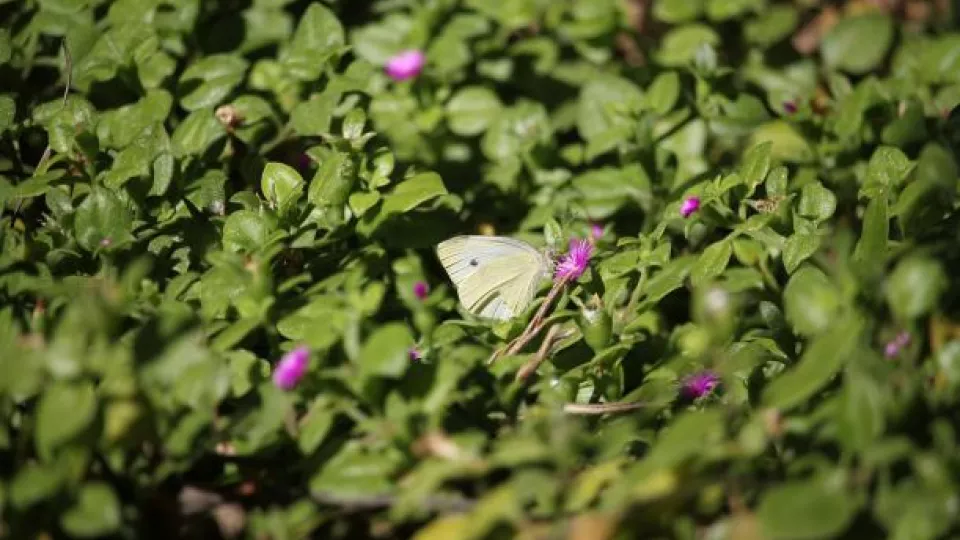Why is this report important?
The IPBES Global Assessment Report on Biodiversity and Ecosystem Services is the most comprehensive ever completed. It is the first intergovernmental report of its kind and builds on the landmark Millennium Ecosystem Assessment of 2005. The Report has some alarming findings: around 1 million animal and plant species are now threatened with extinction, many within decades, more than ever before in human history.
It emphasizes that the loss of biodiversity is as important as rising temperatures when it comes to the impact on life on earth. The loss of species, entire ecosystems and genetic diversity are is identified as a generational threat to human well-being. However, nature is still largely invisible in policy making, economic production processes, and in individual and societal decision making. The main aim of the report is therefore to provide knowledge to equip decision-makers at all levels with the tools that they need to act to make better choices for people and nature.
What are the key aspects of the report?
Biodiversity loss will affect pathways to achieve SDGs
The report provides clear evidence that biodiversity is important for achieving most of the Sustainable Development Goals. Current negative trends in biodiversity and ecosystems will undermine progress towards 80% (35 out of 44) of the assessed targets of the Sustainable Development Goals. Some pathways chosen to achieve the goals related to energy, economic growth, industry and infrastructure and sustainable consumption and production (Sustainable Development Goals 7, 8, 9 and 12), as well as targets related to poverty, food security and cities (Sustainable Development Goals 1, 2 and 11), could have substantial negative impact on nature and therefore on the achievement of other Sustainable Development Goals. In that sense, the report puts a greater focus on the need to look at the trade-offs between biodiversity, and the implementation of the SDGs, especially in relation to food systems, energy production and action for climate mitigation. For instance, expanding the land area for food and bioenergy production, even if done more sustainable, will lead to negative effects for biodiversity and wildlife.
It is the first global assessment ever to systematically include indigenous and local knowledge.
The report has systematically included indigenous people’s knowledge and experiences. Traditional Indigenous Territories encompass more than 20 percent of the world’s land surface and 80 percent of the planet’s known terrestrial biodiversity. Also, the greatest cultural diversity exists in the world’s tropical forests zones. Many indigenous people still manage their lands according to traditional principles and use a different set of indicators, like health of the land, caring for the country, and reciprocal responsibility with the goal of promoting ecosystem health and integrity. Some of these indicators are often reasonably compatible with indicators used by western scientists. Yet other indicators are deeply embedded in different local world views that can hardly be measured or understood by western-trained scientists and even less so be made compatible with what is commonly understood to be scientific principles.
Based on the indigenous and local knowledge, what the report shows is that many indigenous peoples and local communities have observed fast paced changes in nature and changes to ecological processes over the past 50 years and these are almost all perceived to be negative for nature itself, but also for people. Readily noticeable changes are a decreasing availability of resource; an increase in time/distance needed to travel to harvest resources; new and invasive as a result of a changing climate (e.g., southern species to arctic areas) and direct human interference; the loss of habitats, especially forests and savannahs; and the overall health of wild animals populations and the individual’s body mass is decreasing.
What can researchers and society do? What are the most important actions?
It is not too late to make a difference. The report emphasises that it is only through ‘transformative change’, that nature can still be conserved, restored and used sustainably – this is also key to meeting most other global goals. By transformative change, we mean a fundamental, system-wide reorganisation across technological, economic and social factors. The report highlights that the loss of biodiversity is also a result of social and economic development paradigms that have been dominated by the absolute dedication to economic growth and wealth creation. Up until now, this link has not been made clear enough, as ecosystems are often studied in isolation from broader social, political and economic issues. This is a very important finding of the IPBES, because it makes it explicit that biodiversity loss is co-driven by the structure of today’s economic system. There are six policy scenarios in the report. If we continue to follow the business as usual scenario, the negative trends in nature, ecosystem functions and in many of nature’s contributions to people will continue to 2050 and beyond due to the projected impacts of increasing land and sea use change, exploitation of organisms and climate change.
The most important take home message is the need to recognise that protecting the world’s remaining biodiversity is not compatible with our current consumption patterns that already exceed the world’s carrying capacity. Consequently, the report suggests that governments align all policies with the principle of protecting biodiversity and nature. This requires removing environmentally harmful subsidies, reform economic incentives to environmentally positive behaviour at all levels, starting from individual consumers to the firms involved in international trade and financial systems. But most importantly, to introduce an ethical and moral as well as social responsibility to all members of society, that is all of us, to protect the very system that sustains our live every single day.
Above all, the report is a stark reminder of what will happen if governments around the world do not take an active stance on scaling down on the currently highly unsustainable production and consumption, coupled with tremendous inequalities and the resulting disastrous consequences for people and the natural environment.
About the report:
The report was prepared by 145 leading international experts from 50 countries, balancing representation from the natural and social sciences, with additional contributions from a further 310 experts. It covers all land-based ecosystems (except Antarctica), inland water and the open oceans.To ensure the highest-possible levels of accuracy, credibility and policy-relevance, the IPBES Global Assessment has been extensively reviewed, twice, through an open and transparent process, by hundreds of external experts including scientists and decision-makers (including governments), practitioners and the holders of indigenous and local knowledge.

